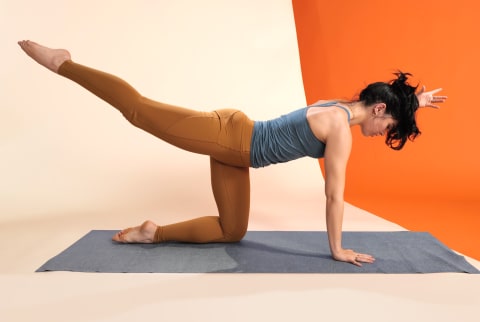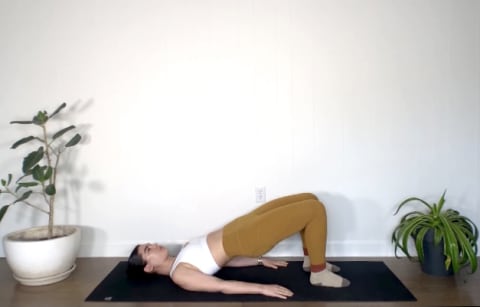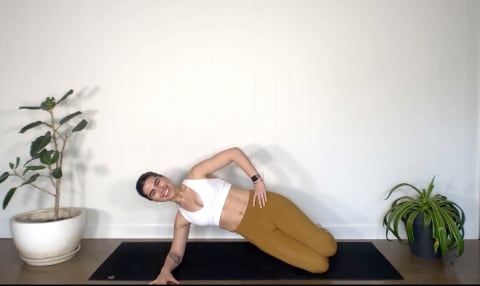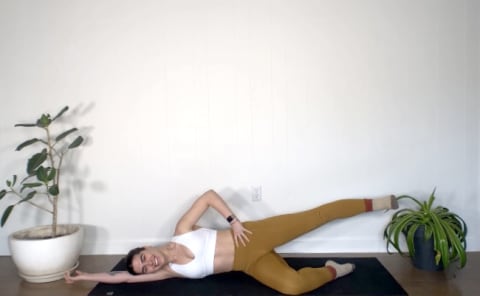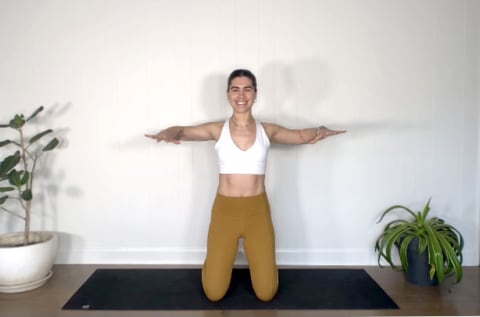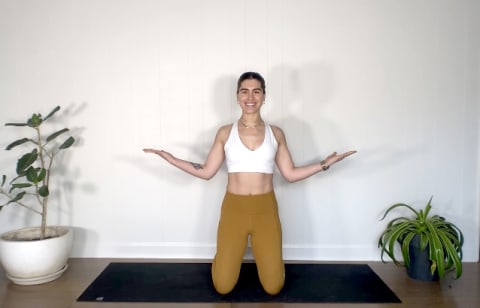As a certified Pilates instructor and prenatal and postpartum corrective specialist, the question I often find myself asking is: “Why do so many prenatal and postpartum fitness classes focus just on restorative practices and not on actually building the strength and stamina required for motherhood?” Your primary focus post-baby is restoring your deepest core and pelvic floor muscles, and part of this includes relearning how to breathe. Because the growing baby essentially pushes organs up into your diaphragm, you may have become accustomed to short, shallow breathing—this can prevent you not only from finding nervous system relief but also from using your core functionally. Learning to breathe three-dimensionally (into the pelvic floor, plus the side and the back ribs) will free up tension and make your core exercises more effective. Intra-abdominal pressure also increases during pregnancy, as the growing baby causes the abdominal muscles to stretch, which ultimately means a weaker core. Intentional core exercises with breathwork integration will also support closure of abdominal separation, or diastasis recti. Always consider the pelvic part of your core because even if you have a C-section, the pelvic floor has been supporting the weight of your baby for nine months and will need some focused training to prevent/heal pelvic floor pain and dysfunction. Another important facet of postpartum exercise is posture correction. Carrying a growing baby for nine months can throw off your balance, cause tightness and compensation in the low back, overstretch the upper back, and even weaken the glutes. An expertly designed postpartum program should address these imbalances and work to help rebuild supportive posture—not just for pain relief but also to set you up for the physical demand of mom duties, like feeding and carrying baby (and the endless associated baby supplies!). Michele McGurk, P.T., WCS, PRPC, an APTA board-certified women’s health clinical specialist in physical therapy, also recommends, if it’s at all possible, moms seek out pelvic floor physical therapy at six weeks postpartum, to get ahead of symptoms and fast-track recovery before returning to regular exercise. McGurk believes preventive treatment can “facilitate their own healing process; address common postpartum symptoms like pelvic pain and urinary leakage; as well as prevent issues in the future.”


